At 5.35 pm on 8 December 1941 the battleship Prince of Wales and battlecruiser Repulse, with supporting destroyers, left Singapore to attack a Japanese seaborne invasion force that was landing in Malaya. By the early afternoon of 10 December, both ships had been sunk, with heavy loss of life. Exactly how many died from the loss of Prince of Wales and Repulse has been variously stated. The official figure is 840, and other numbers have been offered in secondary accounts; but the Force Z Survivors’ Association has identified 763 by name – some 327 from Prince of Wales and 436 from Repulse.[1] This is not the whole human side of the story. Some who survived the sinkings fell into Japanese hands after the fall of Singapore and died as prisoners.[2]
Prince of Wales leaving Singapore on 8 December, 1941. Public domain, via Wikipedia.
We saw in the last article how the deployment of Prince of Wales and Repulse was initially a diplomatic move, spearhead of a Far Eastern Fleet designed to deter Japanese aggression, or to act as a ‘fleet in being’ if war broke out. As it happened, war broke out within a few days of their arrival in theatre, and when news came of an invasion force approaching Malaya (now Malaysia), only these ships – ‘Force Z’[3] – were available. Admiral Sir Tom Phillips, commanding the British Far Eastern Fleet, had to use them. An invasion of Malaya[4] was a direct threat to the Singapore naval base.[5]
Prince of Wales had maintenance issues on 8 December. She had been docked, not all boilers were re-connected,[6] and her surface-search radar was inoperative. Technicians from the RAF were called to look at the radar only as she was about to sail, reporting that had they been summoned a couple of days earlier, they might have repaired it.[7] The boilers were brought on line before the battleship sailed, but the final problem was air conditioning; the on-board plant was good for North Atlantic conditions but struggled in the Mediterranean, and the South China Sea was worse. Men in the engineering spaces, particularly, risked heat exhaustion.
HMS Repulse leaving Singapore for the last time. (Public domain).
Phillips was unaware that the Japanese had deployed its specialist ‘ship killing’ squadrons of the Genzan, Mihoro and Kanoya Air Groups to Saigon on news of the British deployment. The RAAF and RNZAF had deployed fighter squadrons to Singapore and to air bases in Malaya, equipped with Brewster Buffaloes.[8] However, Phillips was told that air cover was not available for his raid on the Japanese transports and landing beaches; and later decided not to ask, for fear of alerting the Japanese to his whereabouts. As a result, although RAAF 453 Squadron was on stand-by at RAAF Sembawang to provide air cover at sea, they could not do so.[9]
In the event, the force was spotted by Japanese reconnaissance aircraft around 5.40 pm on 9 December, and Phillips abandoned the operation. He diverted to Kuantan early on 10 December where there was a report of a landing. This proved false, so before returning to course for a planned rendezvous with destroyers off the Anambas Islands, he steamed north and then east to investigate reported barges under tow.
The Japanese were aware of their presence, and around 6.00 am on 10 December ten bombers of the Genzan Air Group began taking off from Saigon to search for them, followed by the Genzan, Kanoya and Mihoro air groups, some 85 aircraft in all.[10] They were returning to Saigon when, at 10.00 am, the destroyer Tenedos, around 140 miles south of Force Z, was found and attacked by nine G3M’s.[11]
This well-known image of the two ships under attack shows Repulse at bottom, after the first bomb hit. Public domain, via Wikipedia.
Then, at 10.15 am, Force Z was spotted by a Japanese scout plane, which vectored in the strike force. The incoming aircraft were picked up by radar, and at 11.13 am Prince of Wales engaged the first wave of eight high-altitude bombers with her 5.25-inch DP guns. The aircraft pressed on and hit Repulse with a 250-kg bomb, damaging the port hangar and fracturing a steam pipe.[12] The old battlecruiser was covered with spray from near-misses.[13]
At 11.38 am some 25 aircraft approached Prince of Wales in two waves. The higher wave of nine flew on – it turned out they had been the aircraft that bombed Tenedos – but the remainder dropped swiftly.[14] On Prince of Wales’ Admiral’s bridge, Lieutenant-Commander R. F. Harland drew Phillips’ attention to them and suggested it was a torpedo attack.[15] Phillips denied that there were torpedo bombers around,[16] which speaks volumes for the calculation he made when committing to the sortie.
A new problem emerged; Prince of Wales’ HACS fire-control system had trouble providing firing solutions, and the aircraft were moving faster than the anti-aircraft crews had been trained to handle. Furthermore, the ‘pom-poms’ kept stopping because of issues with the shells and cartridges. They also lacked tracers, reducing their impact. The 20-mm Oerlikons and single 40 mm Bofors did have tracers, forcing the Japanese to veer away from them.[17]
Two of the eight-barrel 2-pounder ‘pom-poms’ of HMS Prince of Wales, seen here on 20 April 1941. Copyright © IWM http://www.iwm.org.uk/collections/item/object/205138251
The attack was prosecuted from the port side, at an altitude of between 30-35 metres, and the aircraft dropped their Type 91 torpedoes with 150 kg high-explosive warheads from between 600 and 1500 metres distant.[18] Perhaps in order to keep the guns on the enemy as long as possible, Captain John Leach did not order a turn to ‘comb’ the tracks until the last minute. As a result, Prince of Wales was still turning when the torpedoes swept past, and at 11.44 am one struck the port side aft, around Frame 280, adjacent to the outboard port propeller shaft.[19] A huge column of water also shot up further forward, sousing the port aft group of 5.25-inch mounts, and clearly visible from Repulse.[20]
The scale of destruction from this hit, coupled with the water geyser forward, led observers to suppose two torpedoes had struck, perhaps three.[21] Fumes poured into ‘B’ engine room and the turbines in that engine room began vibrating. The outboard port propeller shaft was turning at 204 rpm, and although the officer in charge of the engine room, Lieutenant D. B. H. Wildish, ordered the engine stopped, the shaft had a good deal of momentum and could not be halted quickly, even with 100 lb ‘astern’ steam.[22] By this time the stuffing glands had been torn, which along with a massive hole blown in the shell plating allowed water to flood into the ship. The issues with the shaft were, however, not obvious at first. Wildish confirmed that all seemed in order, and – because the ship was under attack and needed propulsion – cautiously restarted the turbines. Within ten minutes it was evident the shaft was out of line: Knocking sounds were clearly audible, described by one survivor as ‘expensive noises’. Furthermore, the engine room – which was amidships – was flooding via the shaft passage. Wildish had the bilge, fire and finally main condenser pumps switched to bilge suction, but water kept rising and the only option was to abandon the space, leaving the engines running in ‘underwater’ mode.[23]
Inside one of the engine rooms of HMS Prince of Wales, 20 April 1941, photo by Lieutenant R. G. G. Coote. Copyright © IWM http://www.iwm.org.uk/collections/item/object/205138254
All the compartments along the line of the shaft began flooding. While Wildish wrestled with rising water in his engine room, the officers and men in ‘Y’ boiler room, the port diesel generator room, and ‘Y’ action machinery rooms were also trying to control inflows. Five of the eight steam turbo-generators failed, cutting power and preventing the aft 5.25-inch guns firing. The gun crews tried to train their guns manually, using chains and muscle-power; but it was impossible as the ship listed. Leach was forced to order counter-flooding in the starboard void spaces, although he knew it would reduce the effectiveness of the torpedo defence system. The power loss also hit the ship’s pumping system, which could normally handle up to 8900 tons of water an hour,[24] and there was no backup because the emergency diesels were also affected. Steering was lost, and at 12.10 pm Leach ordered the ‘out of control’ balls hoisted.[25]
Repulse, still steaming at 25 knots, now came under a second bombing attack. Captain W.G. Tennant manoeuvered his old battlecruiser ‘like a destroyer’ according to one survivor, and no bombs hit, then sent an emergency signal: ‘Any British Man-of-War, enemy aircraft bombing. My position 134 NYTW 22 x 09’. This was received in Singapore at 12.04 pm and was the first indication that Force Z was in trouble. The RAAF fighters waiting at Sembawang were immediately ordered to fly to the location.[26]
Meanwhile, Tennant closed with the Prince of Wales in an effort to help. The battleship’s list had been reduced by counter-flooding to 9 degrees, but she had a severe stern trim, and by 12.19 pm the port side of her quarterdeck was awash.[27] At 12.22 pm a fresh attack by eight torpedo-bombers split into two formations. Tennant swung Repulse to ‘comb’ the tracks of the first, but the second – which had been heading for Prince of Wales – turned and attacked Repulse on the beam. The battlecruiser was hit amidships by a single torpedo. More aircraft now engaged both ships. Prince of Wales was hit by three torpedoes on the starboard side, including a hit aft that damaged the starboard propellors. Repulse was attacked from several directions, and although her gunners shot down two aircraft and damaged others, she was hit in quick succession by three torpedoes and began listing to port.[28] Tennant ordered abandon ship, noticing there was no sign of ‘panic or ill-discipline’. He called from the bridge to congratulate the men on how well they had fought the ship. Repulse rolled to port, hung for ‘at least a minute and a half to two minutes’ with a 60 or 70 degree list, then capsized at 12.33 pm.[29] The destroyers Vampire and Electra closed in to pick up the men in the water, according to the official staff history saving 42 of 69 officers and 754 of the 1,240 men (these figures vary from the tally given above, see discussion in footnote 1). Tennant was among those saved.[30]
HMS Prince of Wales shortly before sinking. Note the list and stern trim, leaving the quarterdeck awash. Public domain via the Australian War Memorial P01101.001
Prince of Wales was still afloat, and ironically the damage on the starboard side reduced her port list to 3 degrees. But she was making just 8 knots, and only ‘X’ engine room was operational. At 12.41 pm the six operational 5.25-inch guns opened fire on eight approaching bombers, but could not prevent a fresh attack. The aircraft scored a hit on the cinema flat, causing heavy casualties among 300 wounded being treated in that space.[31] The blast also damaged ‘X’ boiler room intakes, forcing the engines to be shut down and robbing Prince of Wales of all motive power.[32] Several other bombs were near misses. According to US naval analysts William Garzke and Robert Dulin, the bomb that hit the cinema flat did not penetrate the armoured deck, but the blast reduced the watertight integrity of the side plating and scuttles, increasing flooding and creating free-surface issues. They also argued that water-hammer effects from near-misses likely reduced hull integrity by causing rivets to fail and damaging seams.[33]
Crew being taken off HMS Prince of Wales a few minutes before sinking, taken from HMS Express. Public domain, via Wikipedia.
At 12.52 pm, Phillips signalled for ‘all available tugs’, a request repeated by Leach at 1.01 pm and again by Phillips at 1.07 pm.[34] Hopes that the ship might be saved, however, were false: Prince of Wales was sinking. Phillips ordered non-essential personnel taken off shortly after 1.00 pm. The destroyer Express came alongside to get them, but by this time Prince of Wales had some 18,000 tons of water aboard, reserve buoyancy was seriously reduced, and her stability was threatened by ‘free surface’ issues: water slopping in large compartments. At 1.15 pm she began listing rapidly, and abruptly capsized at 1.20 pm, her bilge keel hitting Express, which was still alongside. Just as Prince of Wales went down, the Buffaloes of 453 Squadron arrived overhead; but all they could do was offer protection to the destroyers.[35]
The news did not take long to spread. The British Prime Minister, Winston Churchill, was sitting up in bed opening his boxes of official papers for the day when the phone went. It was the First Sea Lord, Sir Dudley Pound. ‘His voice sounded odd,’ Churchill wrote later. ‘He gave a sort of cough and gulp…”Prime Minister, I have to report to you that the Prince of Wales and Repulse have both been sunk by the Japanese…Tom Phillips is drowned.”’ Churchill had ‘never received a more direct shock’.[36]
The loss of Prince of Wales and Repulse had ramifications well beyond the loss of the ships. Their sinking underscored the vulnerability of South East Asia to Japanese attack. And a modern battleship had been sunk. Losing Repulse, with her First World War era underwater protection, was explicable; but Prince of Wales‘ underwater protection was designed to defeat far larger charges than those carried by Japanese air-launched torpedoes. Because the same system was used in the new battleships and carriers there were implications for Britain’s whole naval war effort.
The full story took nearly seventy years to emerge, and we will look into that in the next article. Meanwhile, for more on Britain’s last generation of battleships, check out my book Britain’s Last Battleships. Click to buy.
Copyright © Matthew Wright 2018
Notes
[1] Various figures have been cited, and the official figures vary from those in http://www.forcez-survivors.org.uk/ , as do secondary sources, e.g. Bernard Edwards, Japan’s Blitzkrieg: the Allied collapse in the east 1941-42, Pen & Sword, Barnsley, 2006, cites 377 lost from Prince of Wales and 513 from Repulse, p. 23. But see also http://www.naval-history.net/xDKCas1941-12DEC1.htm#princeofwaleslost, citing 323 from Prince of Wales, and 513 lost in Repulse. This issue requires more analysis than can be given in this article.
[2] http://www.forcez-survivors.org.uk/
[3] So named on 2 December, see http://www.naval-history.net/xGM-Chrono-01BB-Prince%20of%20Wales.htm
[4] Known as Malaya at the time, not Malaysia.
[5] S. W. Roskill, The War at Sea 1939-1945, Vol. 1, The Defensive, Her Majesty’s Stationery Office, London 1954, p. 567.
[6] http://www.naval-history.net/xGM-Chrono-01BB-Prince%20of%20Wales.htm
[7] Noted in Alan Matthews ‘The sinking of Prince of Wales and Repulse’, http://www.forcez-survivors.org.uk/
[8] Matthew Wright, Kiwi Air Power, Intruder Books, Wellington 2017, pp. 79-82.
[9] Edwards, p. 23; see also http://www.naval-history.net/xGM-Chrono-01BB-Prince%20of%20Wales.htm
[10] William H. Garzke, Robert O. Dulin and Kevin V. Denlay, ‘Death of a battleship: a marine forensics analysis of the sinking of HMS Prince of Wales’, 2012 update, p. 6.
[11] BR 1736 (8), 1955, Naval Staff History, Second World War: Battle Summary No. 14, p.
[12] Ibid, p. 13.
[13] Alan Matthews ‘The Sinking of Prince of Wales and Repulse’, Part 2, http://www.forcez-survivors.org.uk/
[14] William H. Garzke, Robert O. Dulin, British, Soviet, French and Dutch Battleships of World War II, Jane’s Publishing Company, London 1980, p. 195.
[15] Bernard Edwards, Japan’s Blitzkrieg: the Allied collapse in the east 1941-42, Pen & Sword, Barnsley, 2006, p. 22
[16] Alan Matthews ‘The Sinking of Prince of Wales and Repulse’, Part 2, http://www.forcez-survivors.org.uk/
[17] http://www.naval-history.net/xGM-Chrono-01BB-Prince%20of%20Wales.htm
[18] Garzke, Dulin and Denlay, p. 12.
[19] Ibid, p. 13.
[20] BR 1736 (8), 1955, Naval Staff History, Second World War: Battle Summary No. 14, p. 14, n.1.
[21] See, e.g. Garzke and Dulin, p. 196.
[22] Ibid, p. 15.
[23] Ibid, pp. 16-17.
[24] Garzke and Dulin, pp. 196-198.
[25] BR 1736 (8), 1955, Naval Staff History, Second World War: Battle Summary No. 14, p. 16.
[26] http://www.naval-history.net/xGM-Chrono-01BB-Prince%20of%20Wales.htm
[27] Ibid.
[28] BR 1736 (8), 1955, Naval Staff History, Second World War: Battle Summary No. 14, pp. 16-17.
[29] BR 1736 (8), 1955, Naval Staff History, Second World War: Battle Summary No. 14, p. 17.
[30] Ibid. These casualty figures differ from those given above, underscoring the variability of sources.
[31] http://www.naval-history.net/xGM-Chrono-01BB-Prince%20of%20Wales.htm
[32] Garzke, Dulin and Denlay, p. 32.
[33] Ibid, p. 33.
[34] http://www.naval-history.net/xGM-Chrono-01BB-Prince%20of%20Wales.htm
[35] Ibid.
[36] W. S. Churchill, The Second World War, Vol. III: The Grand Alliance, Cassell & Co, London 1950, p. 551.

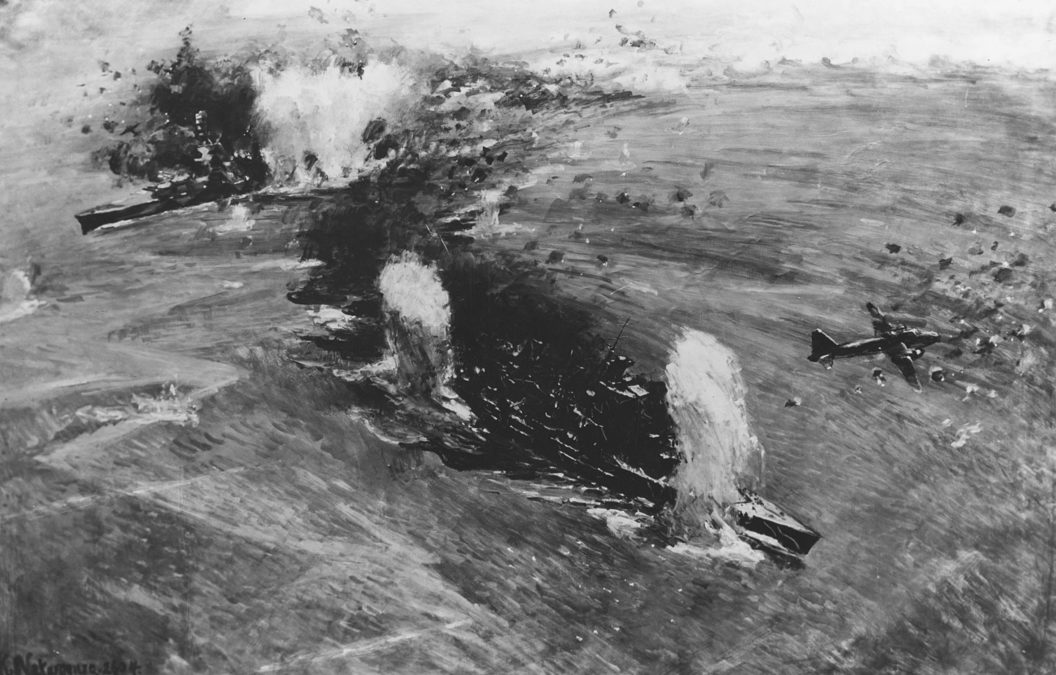

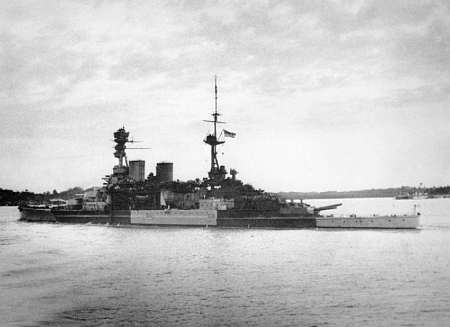
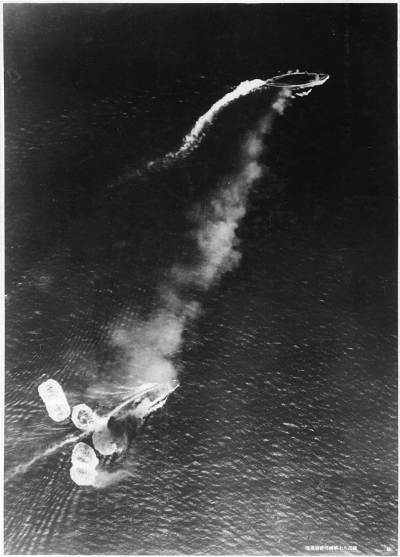
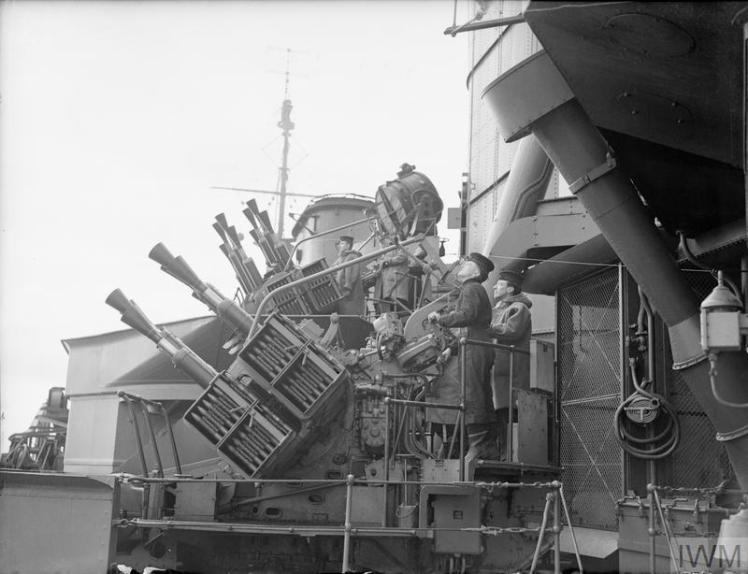
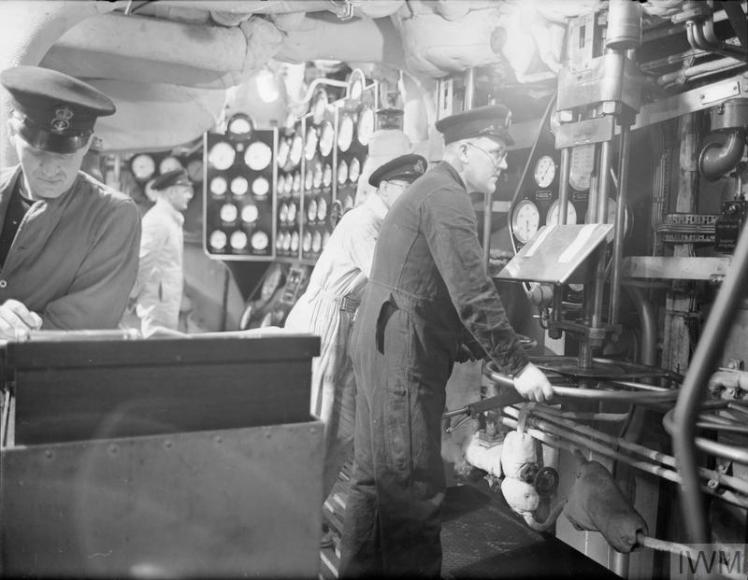
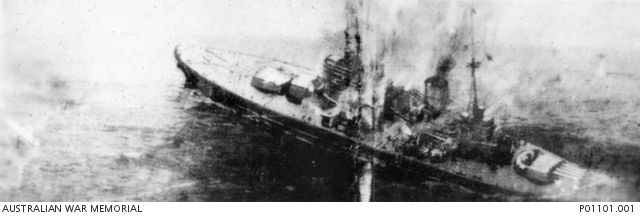

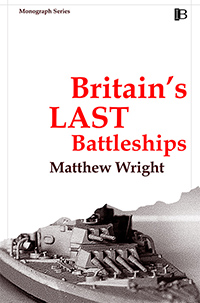

Recent Comments